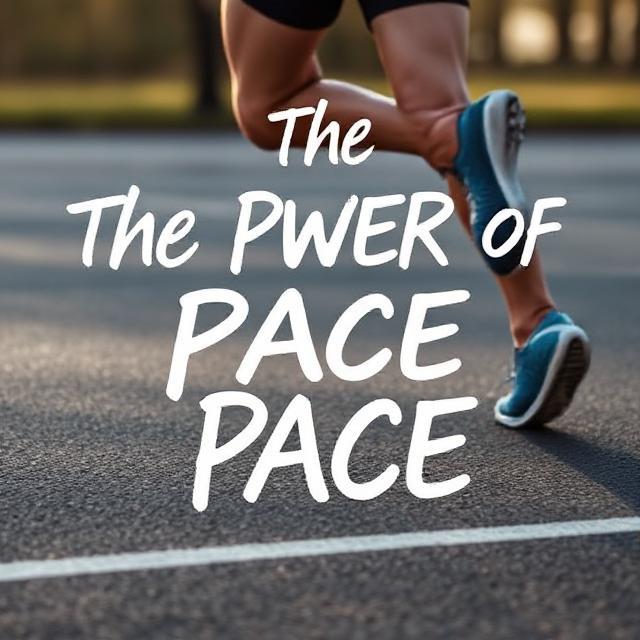Many runners aim to run fast. This is also necessary. Starting from beginners to experts, everyone tries to increase their speed. To increase speed you need good technique and practice for which you will have to get training. This will build your strength and endurance. Now we will provide you with a lot of guidance in this article. You will get a lot of information here to improve your running speed.
Table of Contents
ToggleWhy Running Pace Matters
Running speed means the time taken to cover a particular distance. For example, how much time does it take to run 1 km? The increase in the average speed of running depends on individual fitness. Slowly increase your running speed so that you can achieve some fitness goals. During training, better pace control helps in races. You can aim to make time go by quicker during a run.
The Benefits of Improving Your Running Speed
- Boosted Endurance: Faster runs help build endurance and stamina.
- Enhanced Cardiovascular Health: You can run at different paces. It can increase the strength of the heart and lungs.
- Better Fitness and Strength: You may run faster which increases muscle strength and overall fitness.
- Mental Resilience: Running as fast as you can build discipline, confidence, and mental toughness.
Key Tips for Running Faster
1. Focus on Running Form
Good form is essential for speed and efficiency. Here’s how to improve it:
- Head Position: Keep your head straight, facing forward.
- Arm Swing: During the running, you can swing the arms straight. Move the arms back and forth instead of side to side.
- Stride Length: You can take the thicker and quicker steps. It maintains balance and saves energy.
2. Incorporate Interval Training
Intervals are short bursts of fast running followed by recovery periods. These workouts:
- Intervals are short bursts of fast running followed by recovery periods. These workouts:
For example:
You can run fast pace for 1 minute, then walk or jog for 2 minutes. Repeat this cycle for 15–20 minutes.
3. Run Slow to Run Fast
This approach might sound strange, but running slower on some training days can actually help improve speed on faster days. Running at an easier pace builds endurance, which is critical for maintaining faster paces over time.
4. Add Sprint Workouts
You can add sprinting to your routine. Don’t be afraid to run faster sprinting. Add short, intense sprints into your routine can make a big difference. Sprinting builds fast-twitch muscle fibers. It enhances your ability to run faster overall. You can try running 30-second sprints, resting for a minute in between.

5. Focus on Consistency, Not Just Speed
The best pace for running is one that you can sustain over time. Gradually increase your pace. Don’t push too hard too soon. You can focus on consistency. This prevents injuries and allows for steady improvement.
6. Practice Pacing Techniques
Learning how to improve your running pace involves understanding how to control your speed. Start at a comfortable pace, gradually increase speed, and push during the last stretch. In this way, you can teach your body how to reserve energy and sprint at the end.
7. Strength Training for Runners
Strength training is important for improving speed. You can exercise on your targeted legs, core, and glutes. It enhances the muscle power you need for faster running. You can add some more addition into your routine like squats, lunges, and planks.
How Long Should It Take to Run 1km?
Running time change by some experience. Like for beginners, running 1km may take between 6 to 10 minutes. On the other hand, advanced runners may do it in 4 to 5 minutes. You can set a goal based on your current fitness level. It helps helps track improvement.
Techniques to Make Time Go by Quicker on Long Runs
- Listen to Music or Podcasts: Listening to something keeps you entertained and motivated. Some podcasts help you to run fast.
- Practice Breathing Techniques: Breathing techniques help to improve your focus. It keeps your mind calm.
- Break the Run into Sections: Focus on each segment, which makes long runs feel shorter.
Running Slower: Why It’s Important and How to Do It
You can learn how to run slower. It can be just as valuable as running faster. Slow runs help:
- Improve your running form.
- Build endurance for longer distances.
- From this, you can prevent injuries by reducing stress on muscles and joints.
Try setting a target pace to run slower. It is comfortable, focusing on steady breathing and an even stride. Slow, relaxed runs are an essential part of any training program.
Creating a Plan to Improve Running Pace
Weekly Training Plan Example
Day 1: Long Slow Run (to build endurance)
Day 2: Sprint Intervals (for explosive speed)
Day 3: Rest or Light Activity (such as stretching or yoga)
Day 4: Tempo Run (moderate pace for endurance and speed balance)
Day 5: Strength Training
Day 6: Short Fast Run (focus on running at the best pace possible)
Day 7: Rest
Tracking Progress
- Use a stopwatch or running app to measure pace.
- Set a target for improvement each month to stay motivated.
- Monitor your body and adjust the plan if needed to avoid overtraining.

Benefits of Running Faster Over Time
As you practice and follow a consistent plan, the benefits will include:
- Improved Stamina: Longer runs will feel easier.
- Greater Mental Focus: You’ll feel more disciplined and focused.
- Efficient Workouts: Faster runs mean better results in less time.
Running is a journey, so give your body time to adapt to faster speeds. Start by running as fast as you can for short periods. After some time, gradually build up speed over time.
Additional Information
1. Top Reasons to Boost Your Running Speed
Discover the various physical and mental benefits that come from improving your running speed, from increased muscle strength to enhanced focus and discipline.
2. What to Expect When You Start Running Faster
Understand what changes to expect physically and mentally as you improve your pace, including increased stamina and greater overall fitness.
3. Top Breathing Techniques to Make Running Feel Easier
Effective breathing methods that can help you stay focused, reduce fatigue, and make your runs feel more manageable.
4. Stretching and Recovery for Faster Running
Why stretching and proper recovery are vital for achieving your best pace and avoiding injury during training.
5. Running Faster as a Pathway to Fitness Goals
How speed improvements in running align with broader fitness goals like weight loss, strength, and cardiovascular health.
6. Running with Purpose: Setting Small Goals for Speed and Consistency
The importance of setting measurable goals for your pace, tracking your improvements, and staying motivated in your running journey.
7. Common Mistakes to Avoid When Trying to Run Faster
Learn the most common pitfalls of increasing running speed. You may learn from neglecting form to overtraining, and how to avoid these setbacks.
8. How Strength Training Impacts Running Speed
Learn how strength training complements your running. You can builds muscle power. It enhances your ability to run faster with a solid foundation.
9. Incorporating Hills to Build Speed and Strength
Learn how hill workouts enhance leg strength, endurance, and speed by building resistance and power in your runs.
10. Common Myths About Running Faster
Debunk common misconceptions about speed training, like “running fast every day is best” and the importance of both slow and fast runs in your routine.
11. Understanding Recovery Time for Optimal Speed Gains
Why recovery days matter and how rest helps muscles adapt and improve, resulting in a more sustainable speed boost.
12. Fueling Your Body to Support Speed and Endurance
Discover nutrition tips that provide the energy and nutrients needed to sustain faster paces and improve endurance.
13. How Running Shoes Impact Your Speed
Why the right running shoes make a difference and how to choose footwear that supports speed without compromising comfort.

14. Tracking Your Running Progress: Apps and Tools
Overview of top apps and tools to monitor your pace, track improvement, and stay motivated on your journey to faster running.
15. Creating a Balanced Running Schedule for Optimal Results
The importance of balancing easy runs, long runs, and speed workouts to achieve consistent, sustainable progress.
Related Article
Is the Gym Good for fittest body? Benefits Explained
Fasting Running: Boost Endurance & Burn Fat Effectively
Fat Loss Tips: Effective Strategies to Shed Pounds and Tone Up
Simple Weight Loss Tips for Fast and Lasting Results
Burn Fat Fast: Proven Tips to Shed Pounds and Boost Energy
Conclusion:
It takes a lot of time to improve running speed. Running pace takes dedication and the right approach. Get your focus on good form. Along with this, pay attention to your training so that gradually your speed increases. You should make your routine and mix slow and fast runs in it. You can gradually become a faster and more efficient runner. Remember, every runner is different—find the best pace running routine for you, and enjoy the journey!
With commitment, you’ll be reaching your running goals and boosting your overall fitness in no time. I hope you will have the opportunity to discover something from all this information. You can use all these methods to achieve your fitness goals easily. For more good information you can visit our website thefitnessbite.com. Here you will be told everything which will benefit you.





